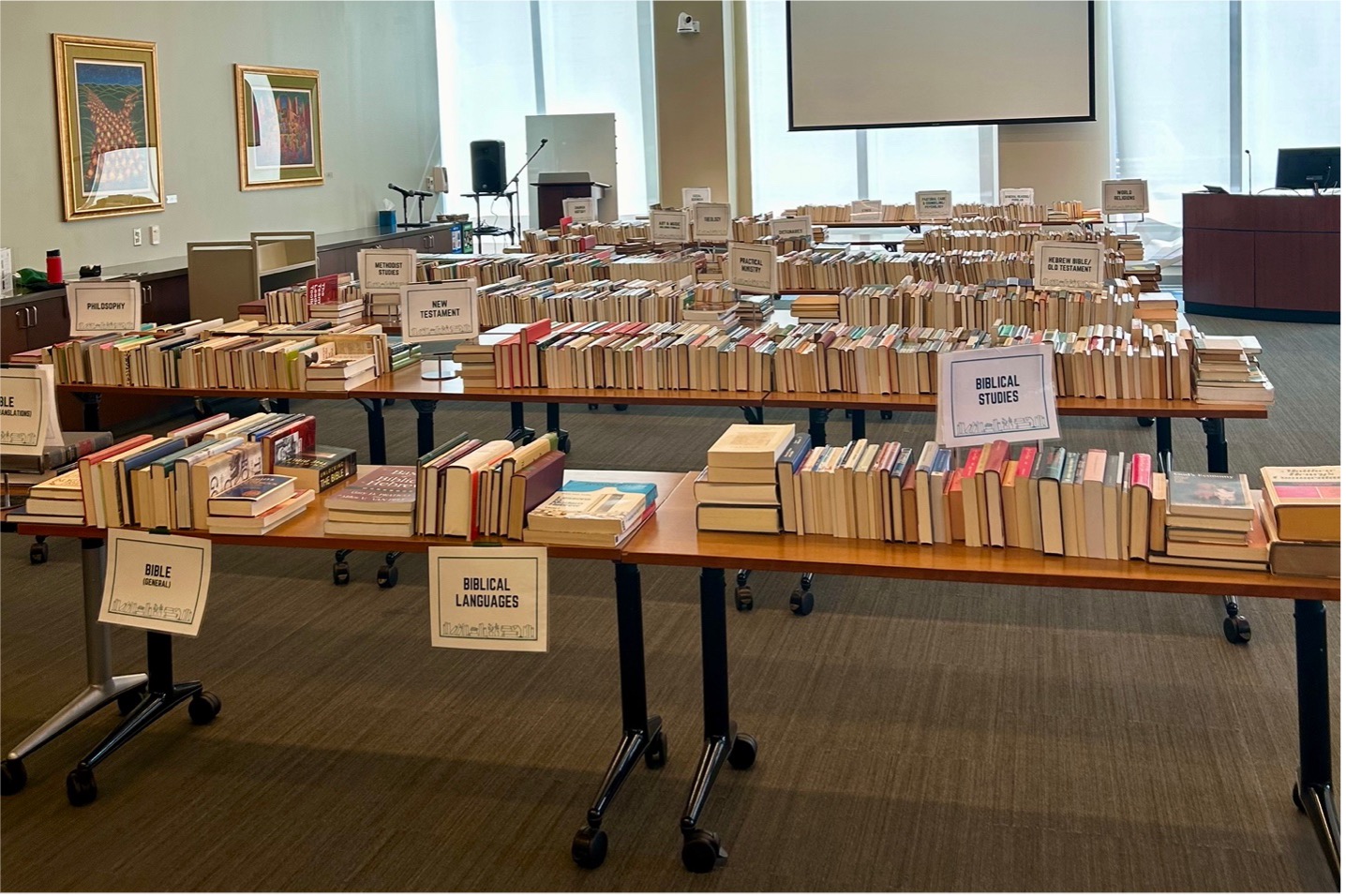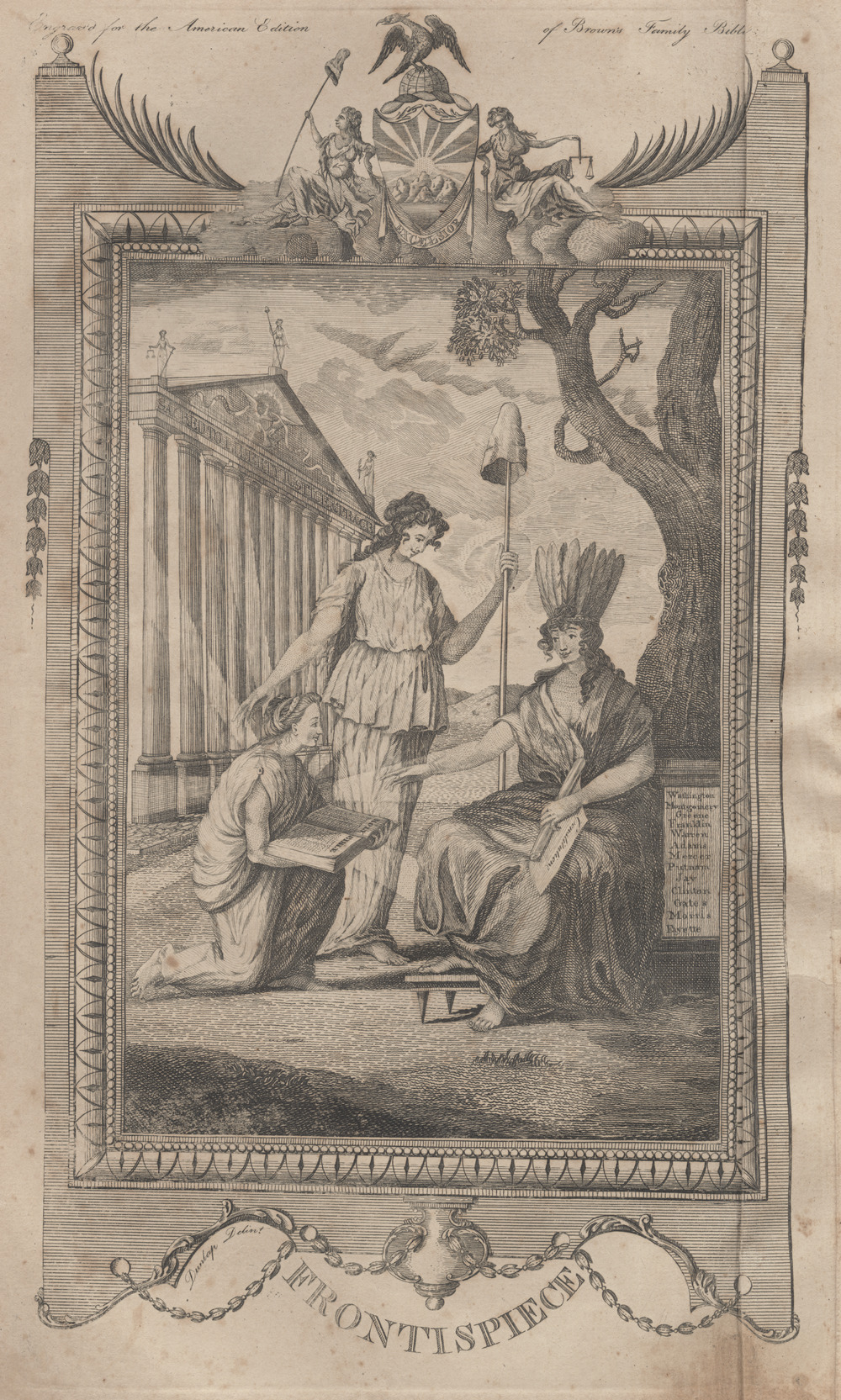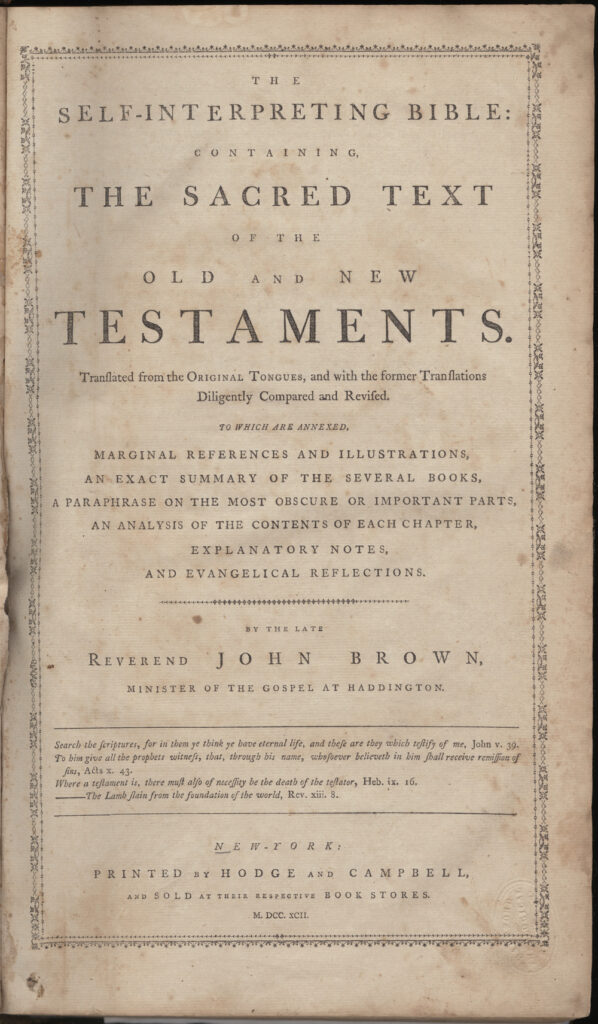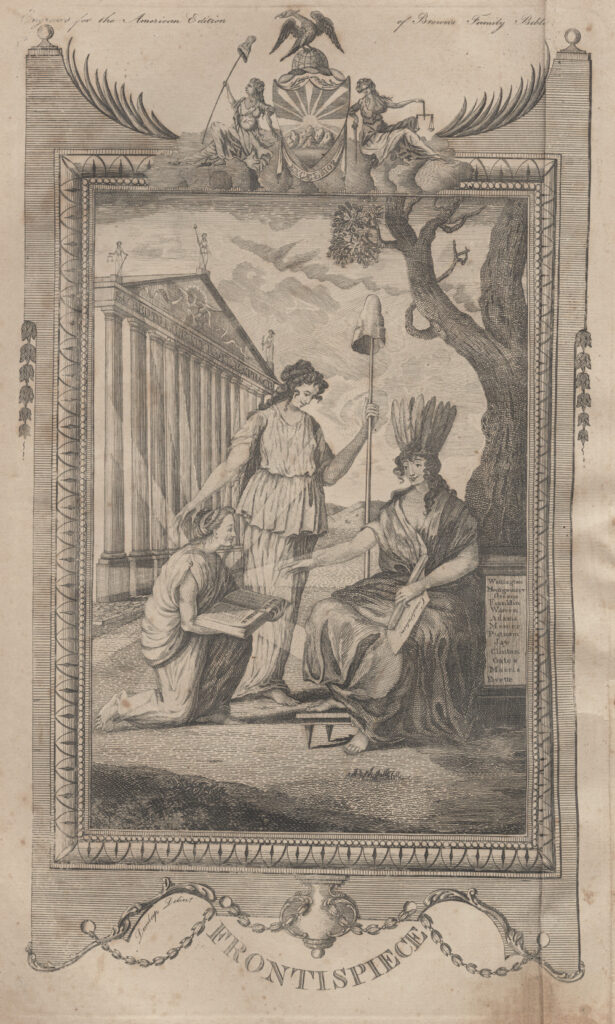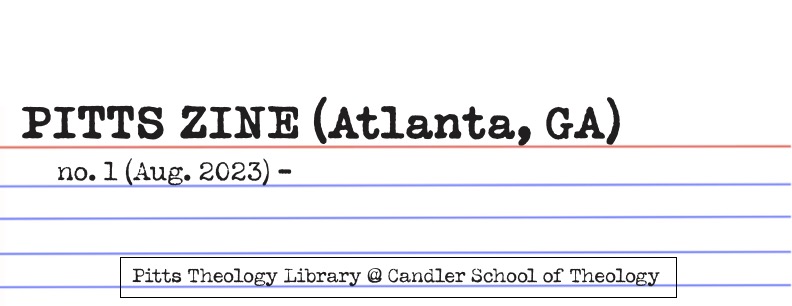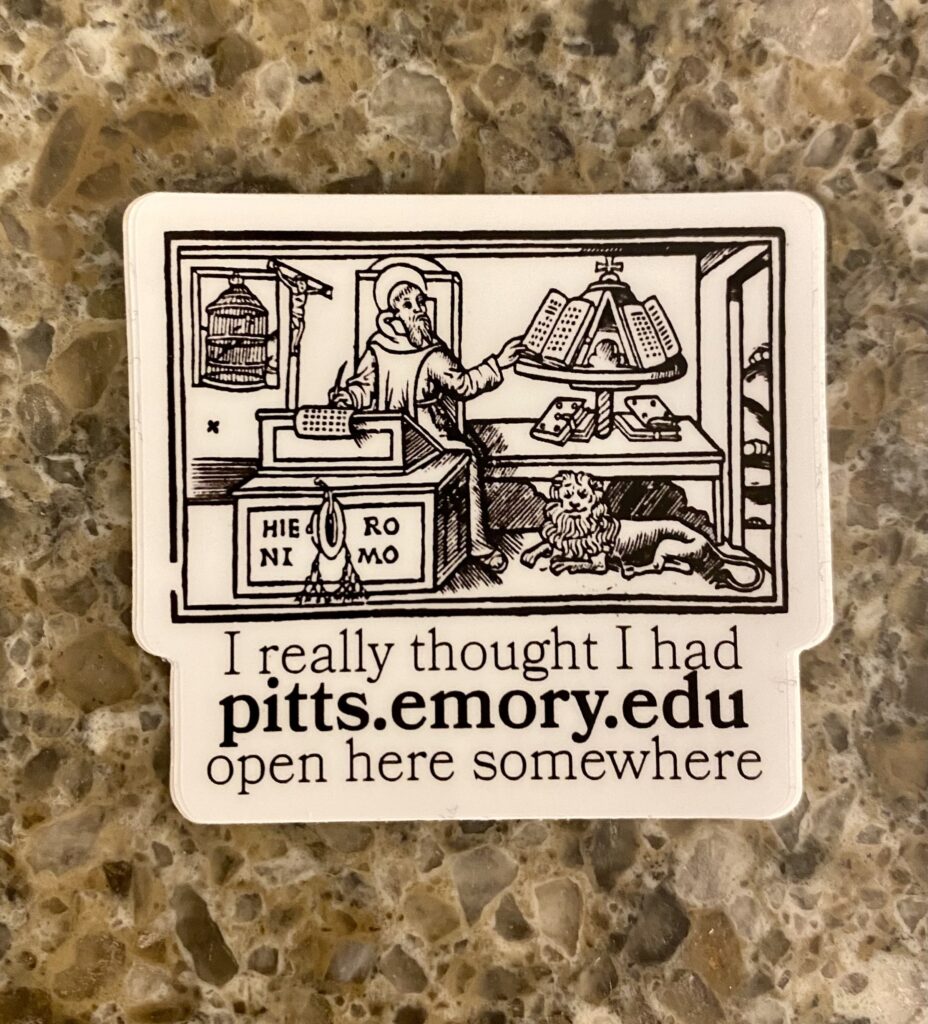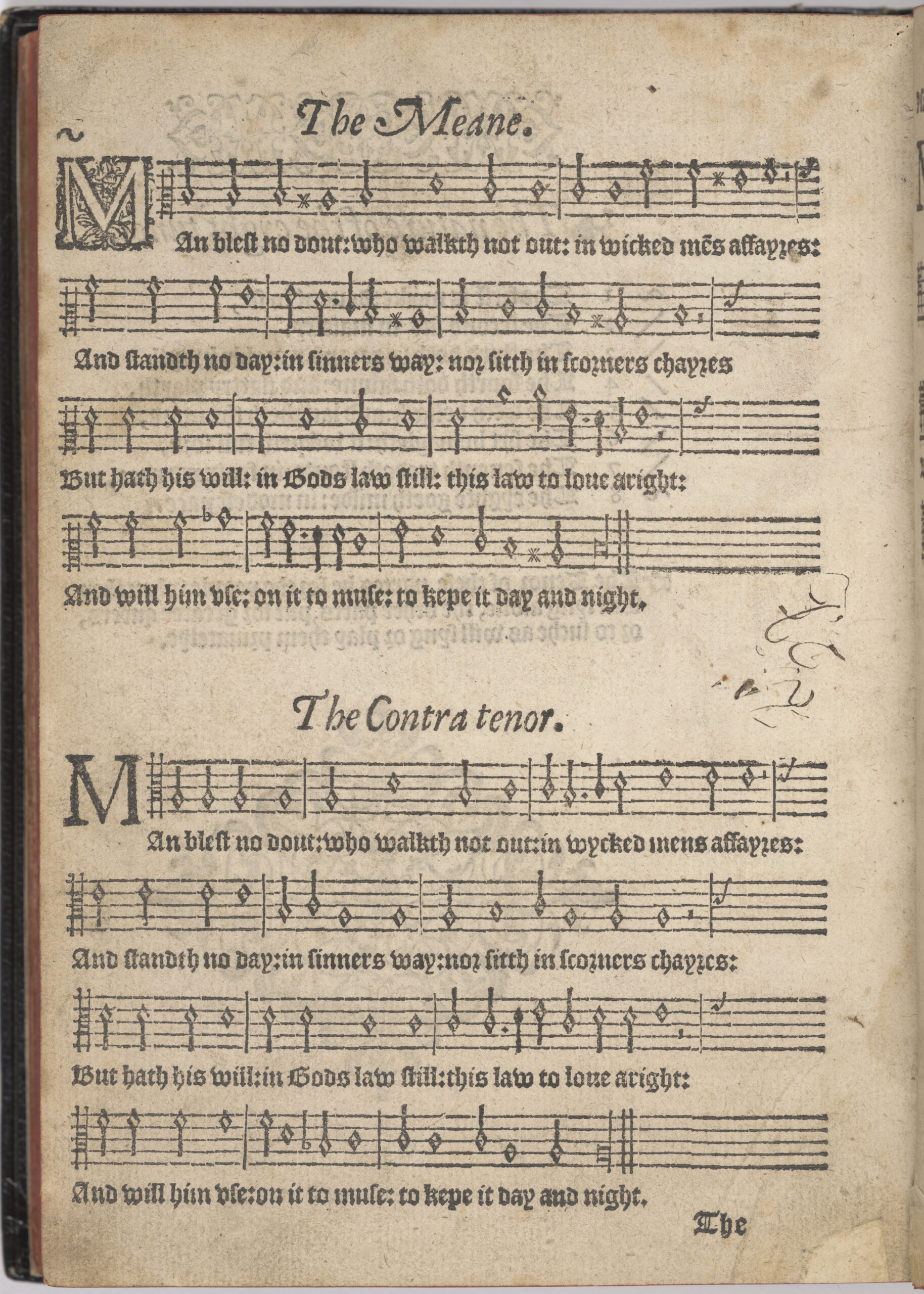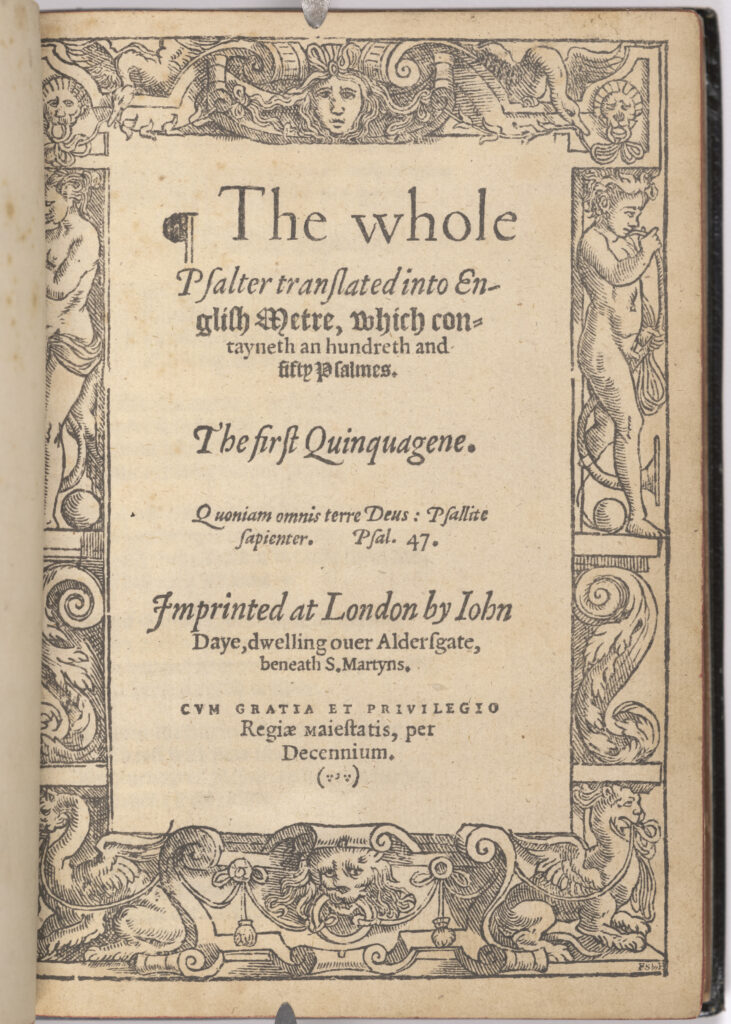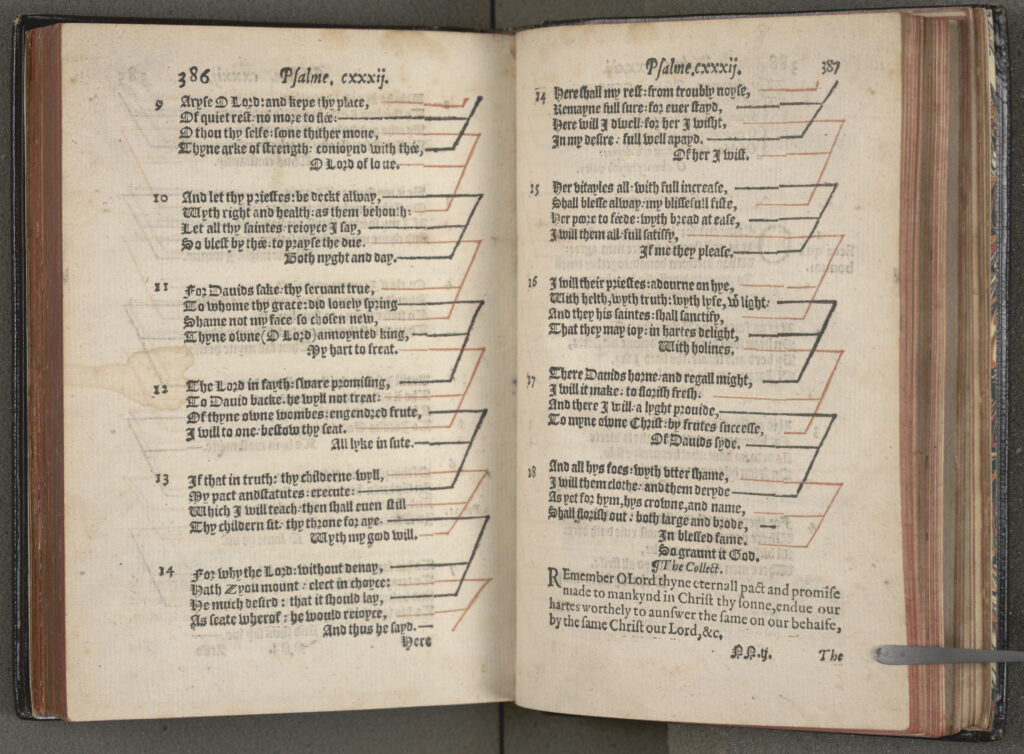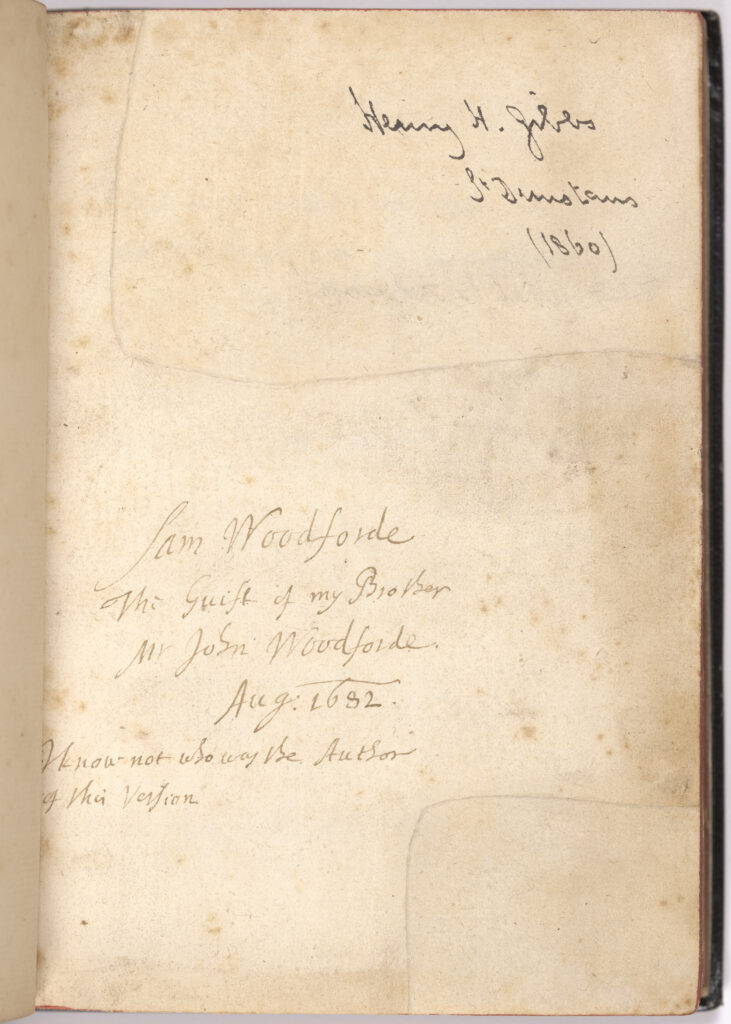We hope you participated in the annual Pitts Friends of the Library Book Sale, which was held on February 27th and 28th. This year’s sale was a resounding success! After two full days of bookselling and treasure hunting, 67 book bins and numerous single books and volumes found new homes, with only 2 carts of material remaining. Do you ever wonder where those books come from?
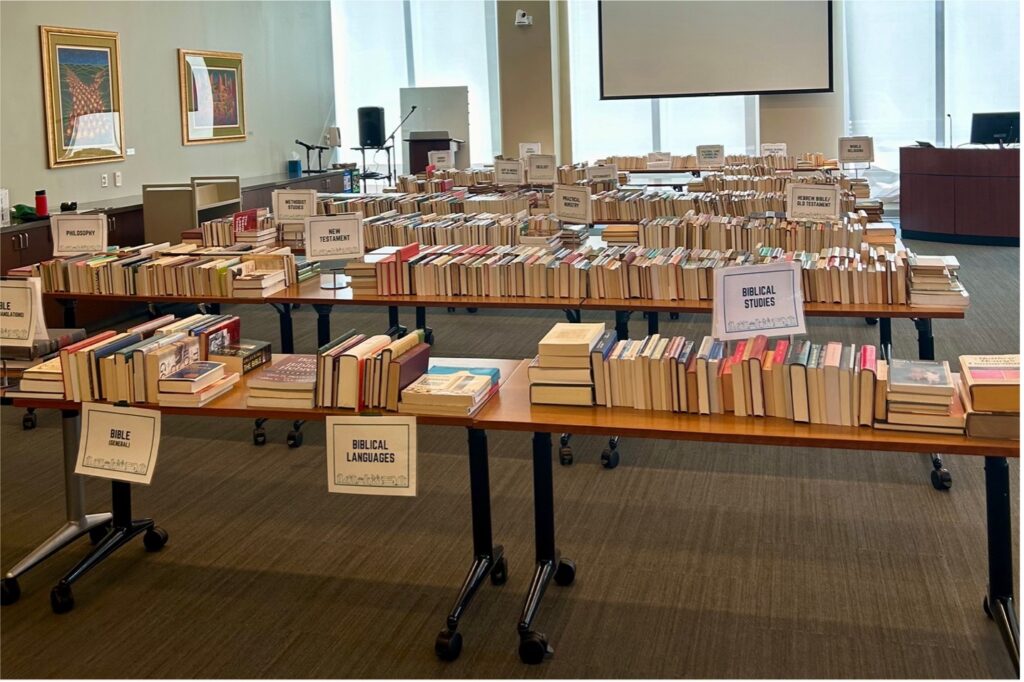
The Pitts book sale is a significant public-facing event for the library, but preparation for the sale happens behind the scenes throughout the year. Between May 2023 and December 2023, student workers processed 6,280 items donated to Pitts, many of which made their way to the book sale tables!
Each year, Pitts receives many book donations from retiring pastors, former professors, individual collectors, and publishers who want their collections to reach theology students and others who may benefit from owning these books. At times physical donations are brought directly to the library, but ideally spreadsheets and lists are provided digitally before the physical items make their way to Pitts.
Book donations are first assessed for quality, then the items are checked against the existing Pitts catalog to determine if the book or edition is already part of the collection. If the book fits within the library’s collection development policy but has not yet been acquired, it is sent to the library’s catalogers to be added to the collection. If the item is in good condition but the library already owns it, it will be saved for the book sale. Book sale items are housed in temporary storage in the first-floor stacks and further organized by broad subject area, such as Theology, Bible, and Pastoral Care.
Occasionally rare and interesting gems find their way into the stream of donations processing. Standouts from the past few months include an 1883 hymnal and personal artifacts tucked into book pages, such as correspondences between collection owners and book authors.


Do you have books that you want to donate to Pitts? Before heading to the library, please fill out the Pitts book donation form! This allows us to gather the necessary information to prepare for donations before they arrive, and to make sure that the process is as streamlined and organized as possible.
We look forward to seeing you at future book sales!
Written by Linden Abston and Kiah Miller, student workers at Pitts Theology Library

